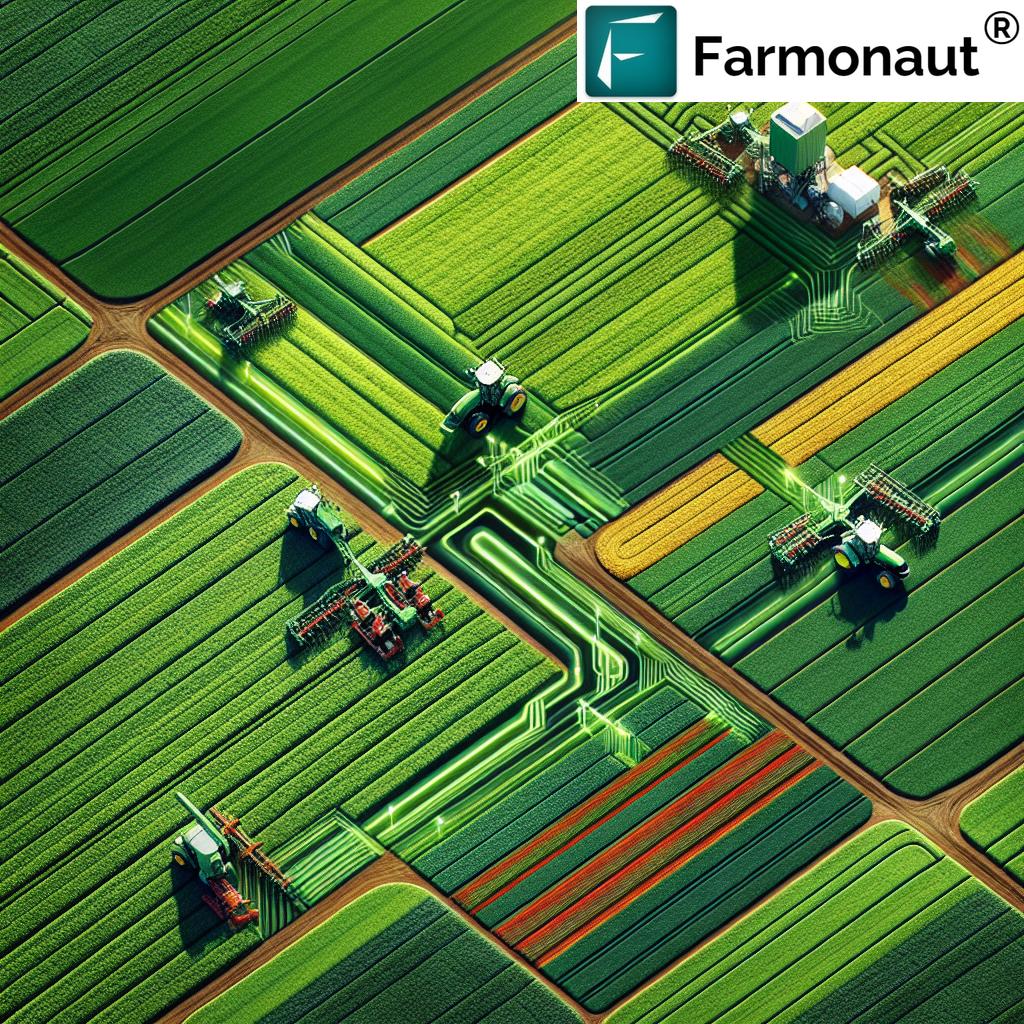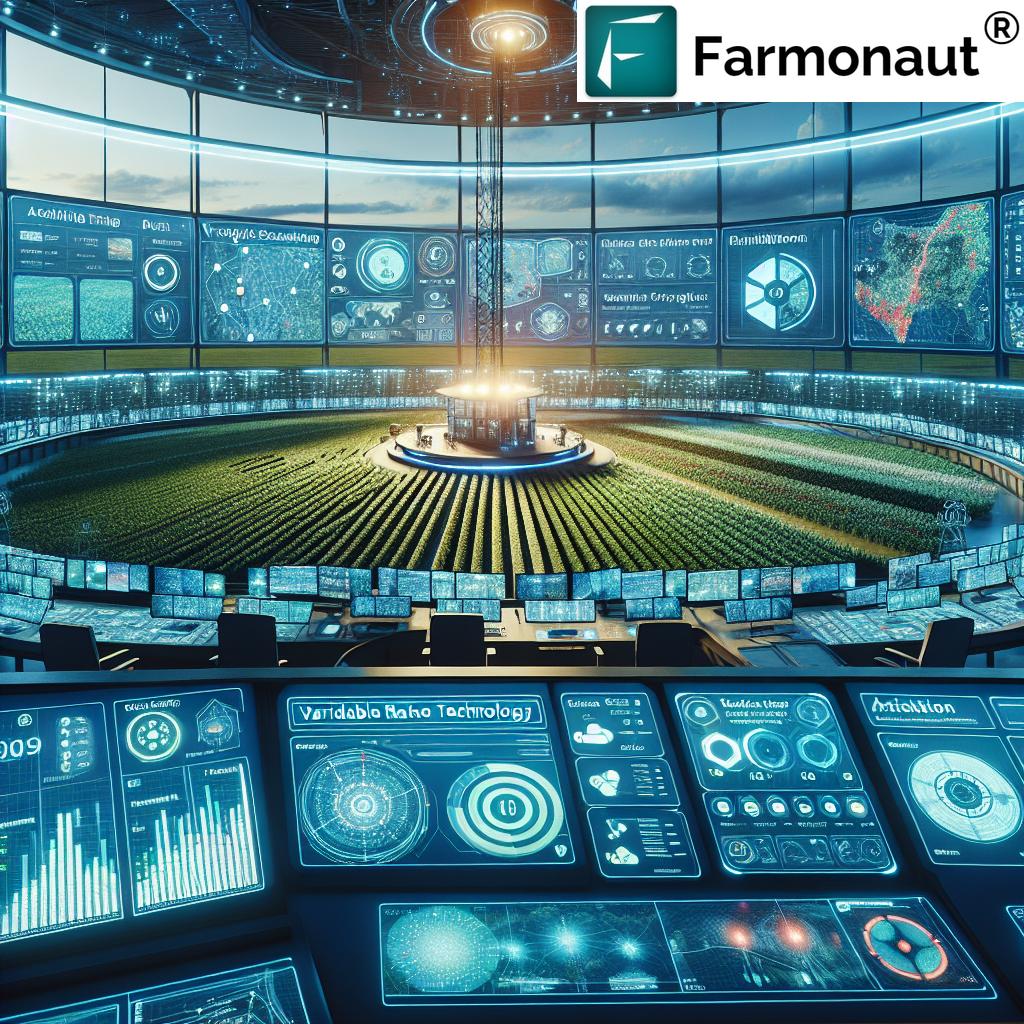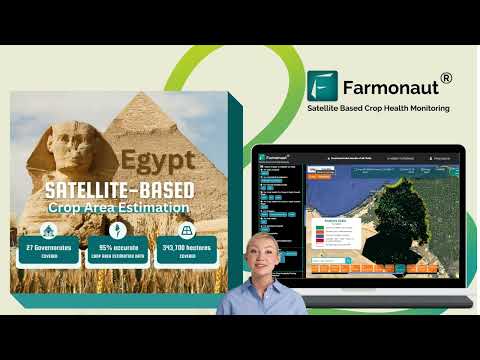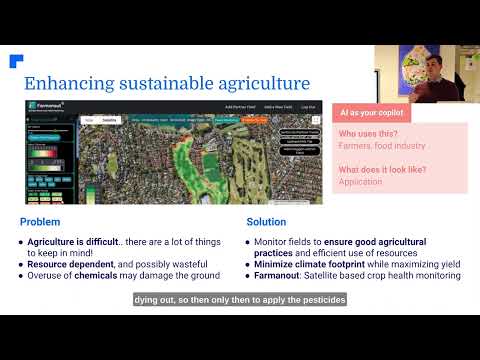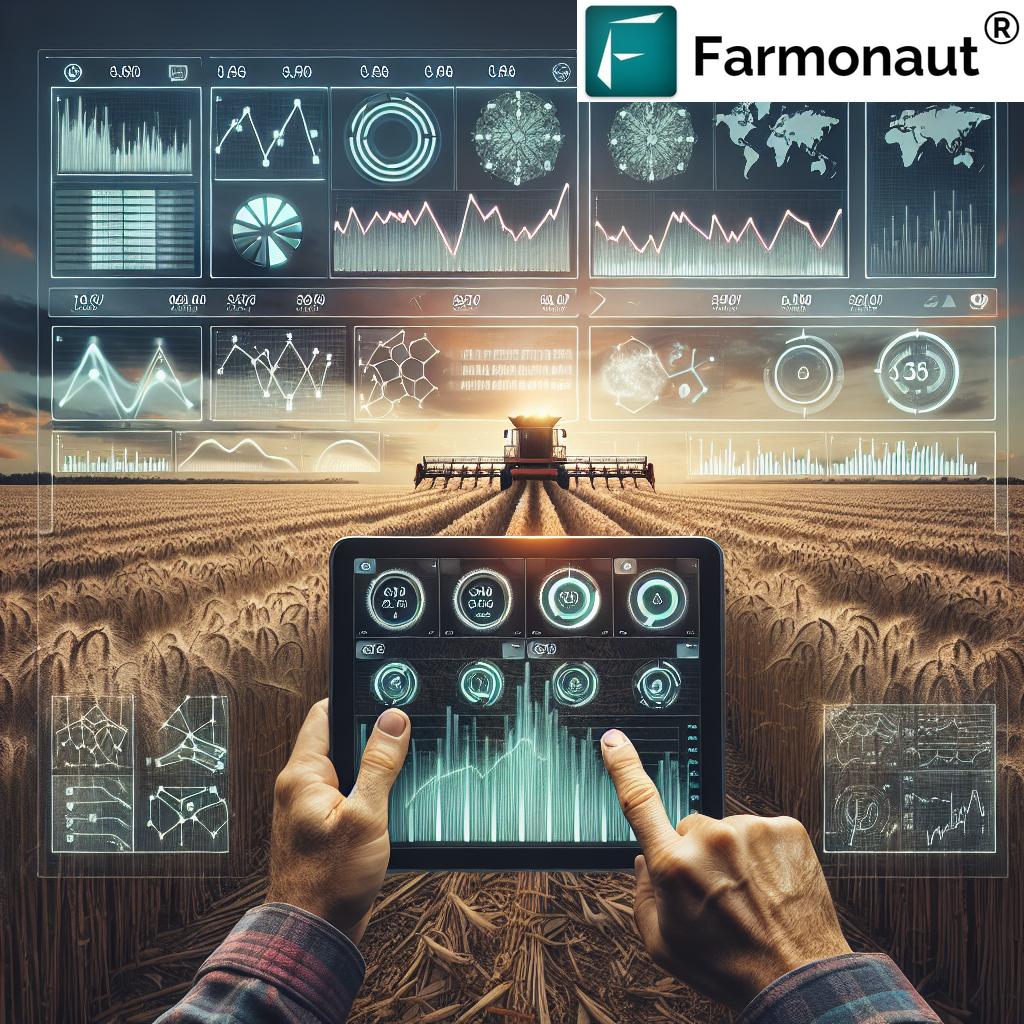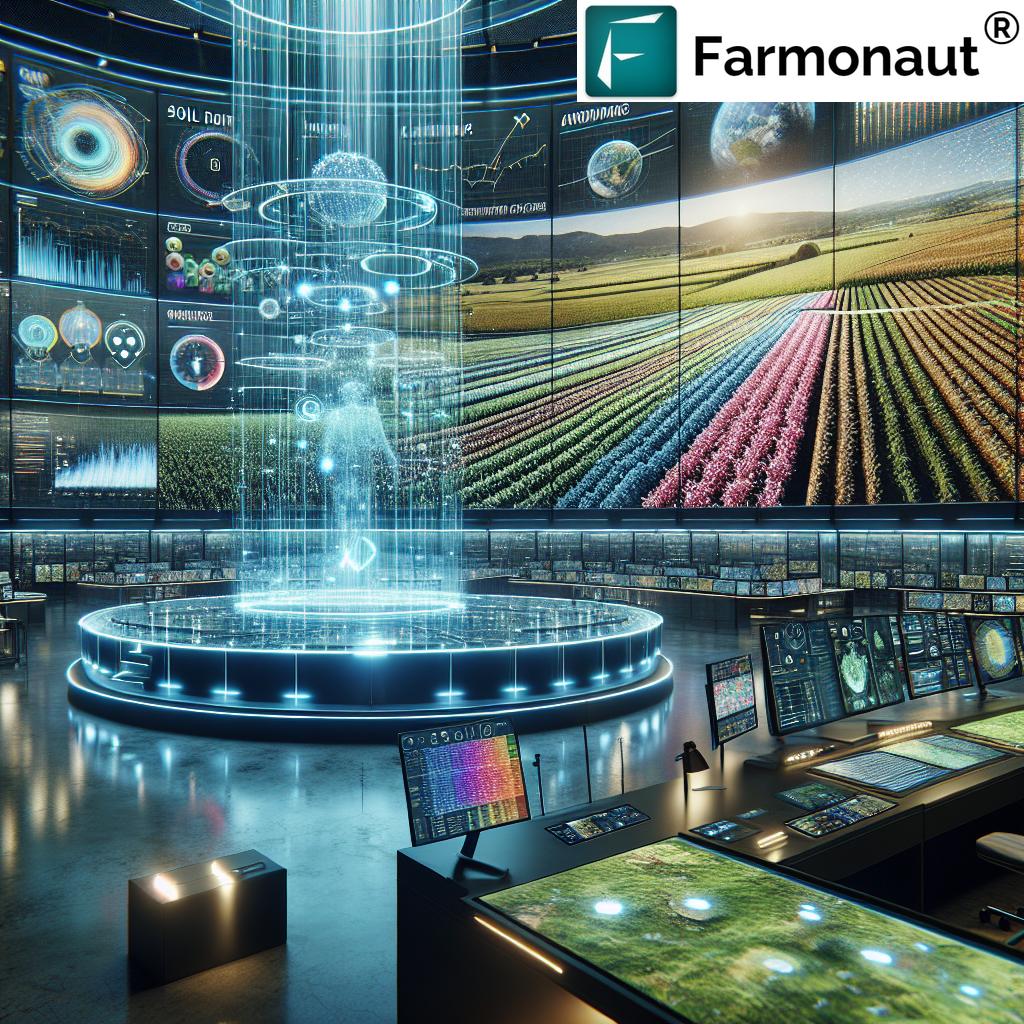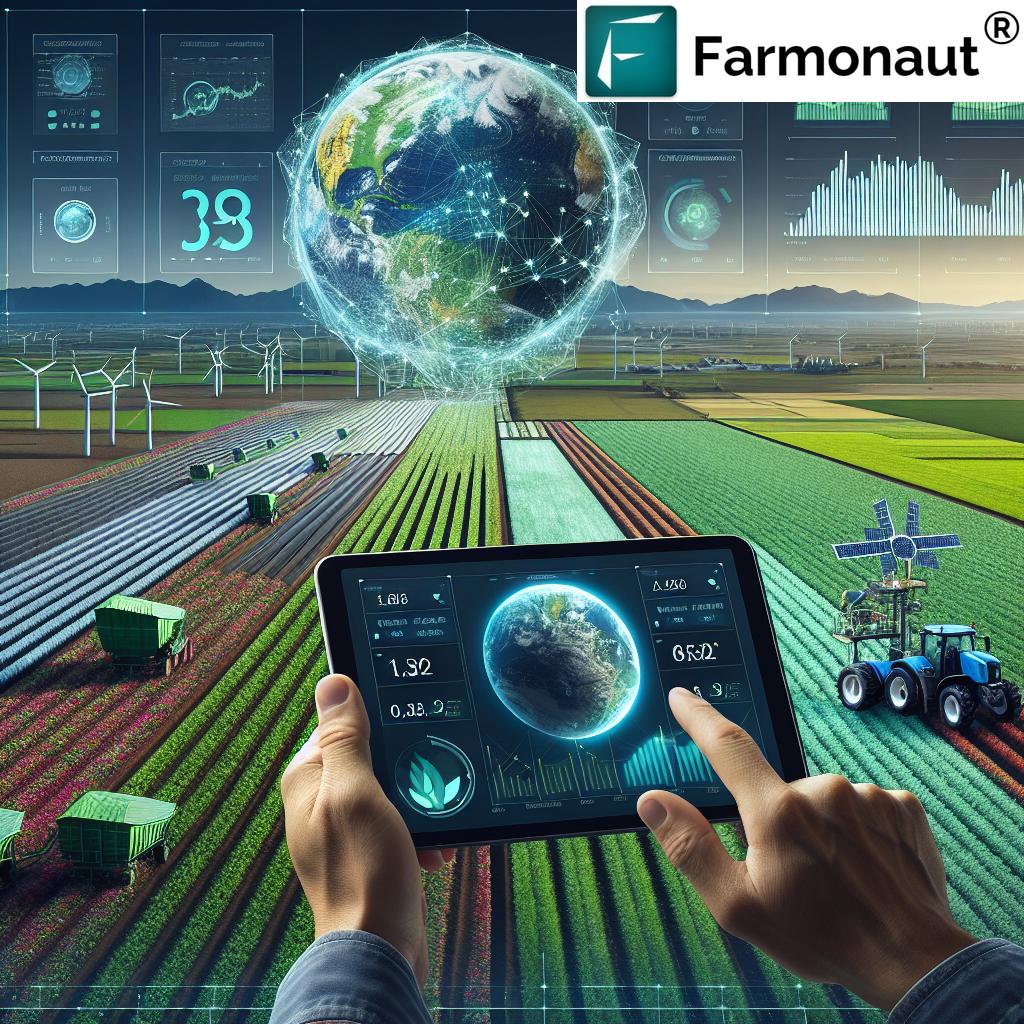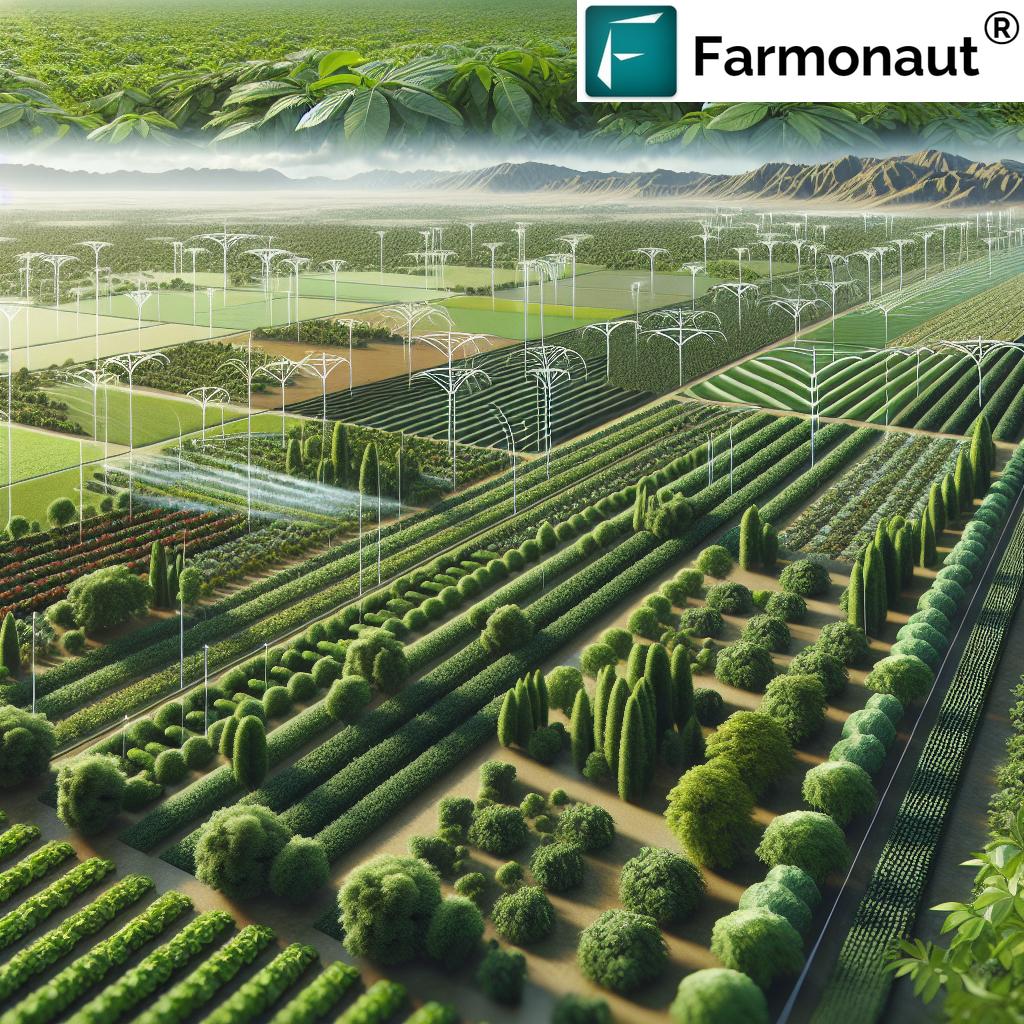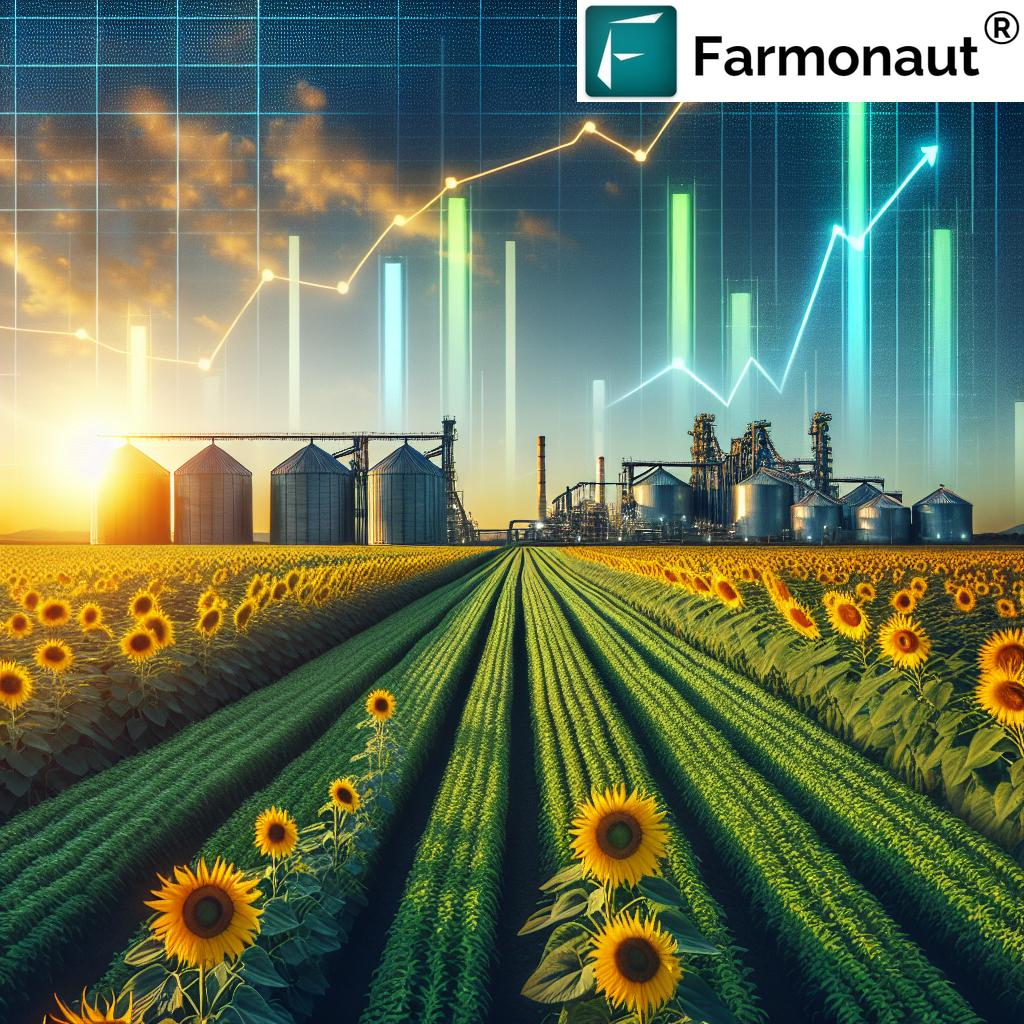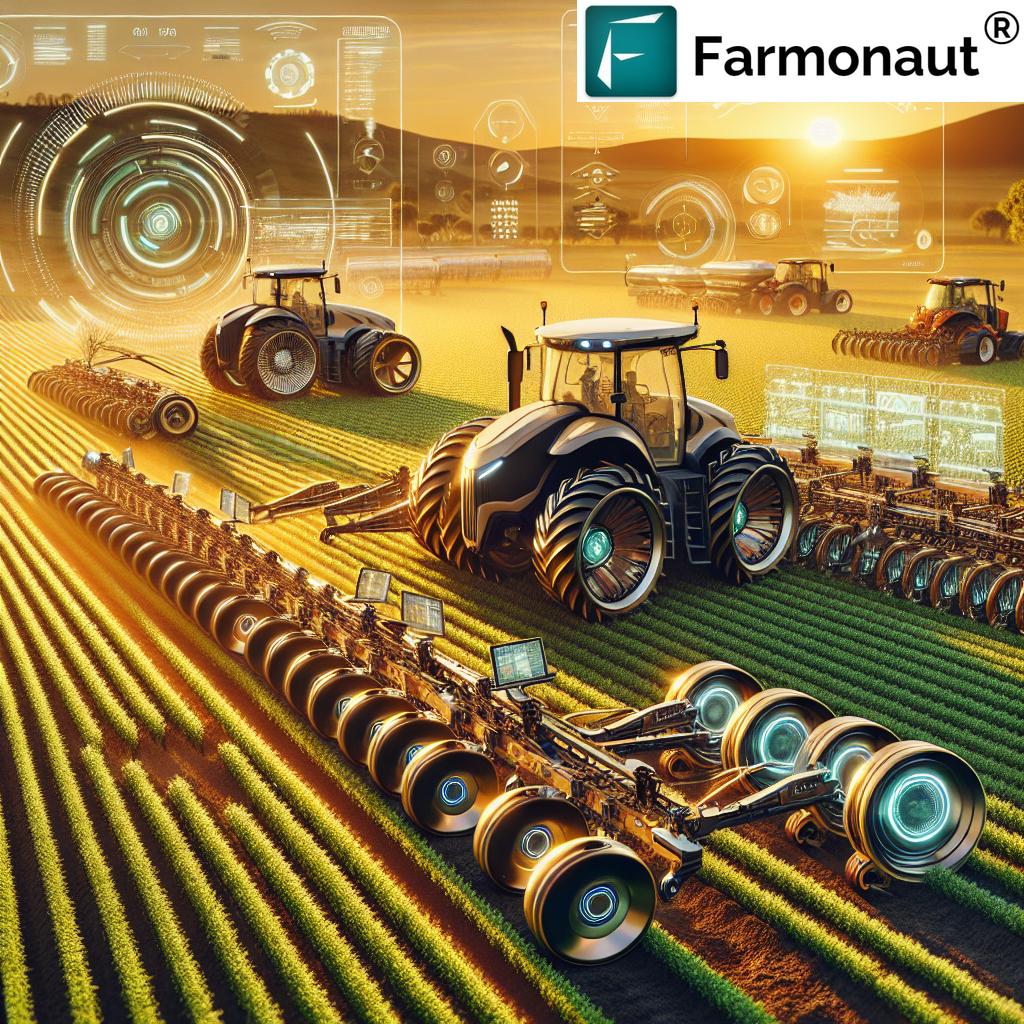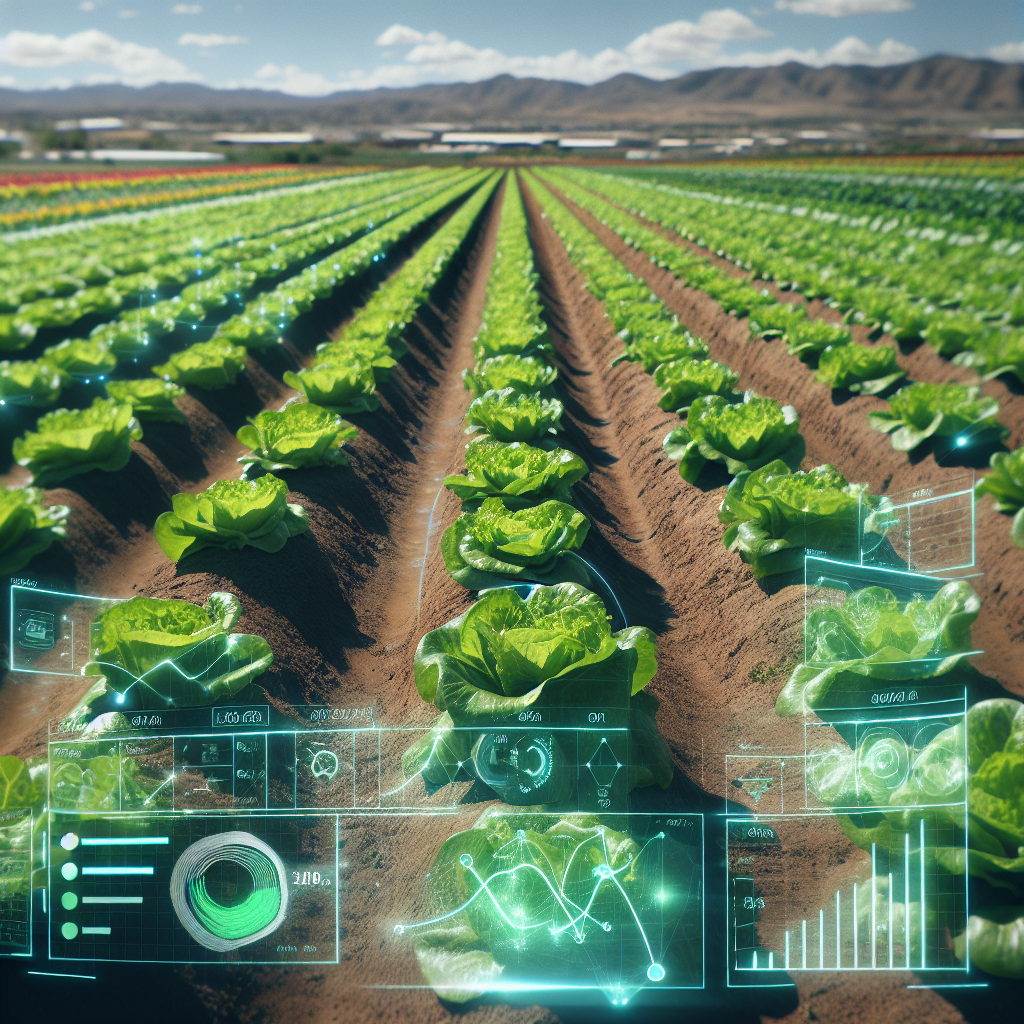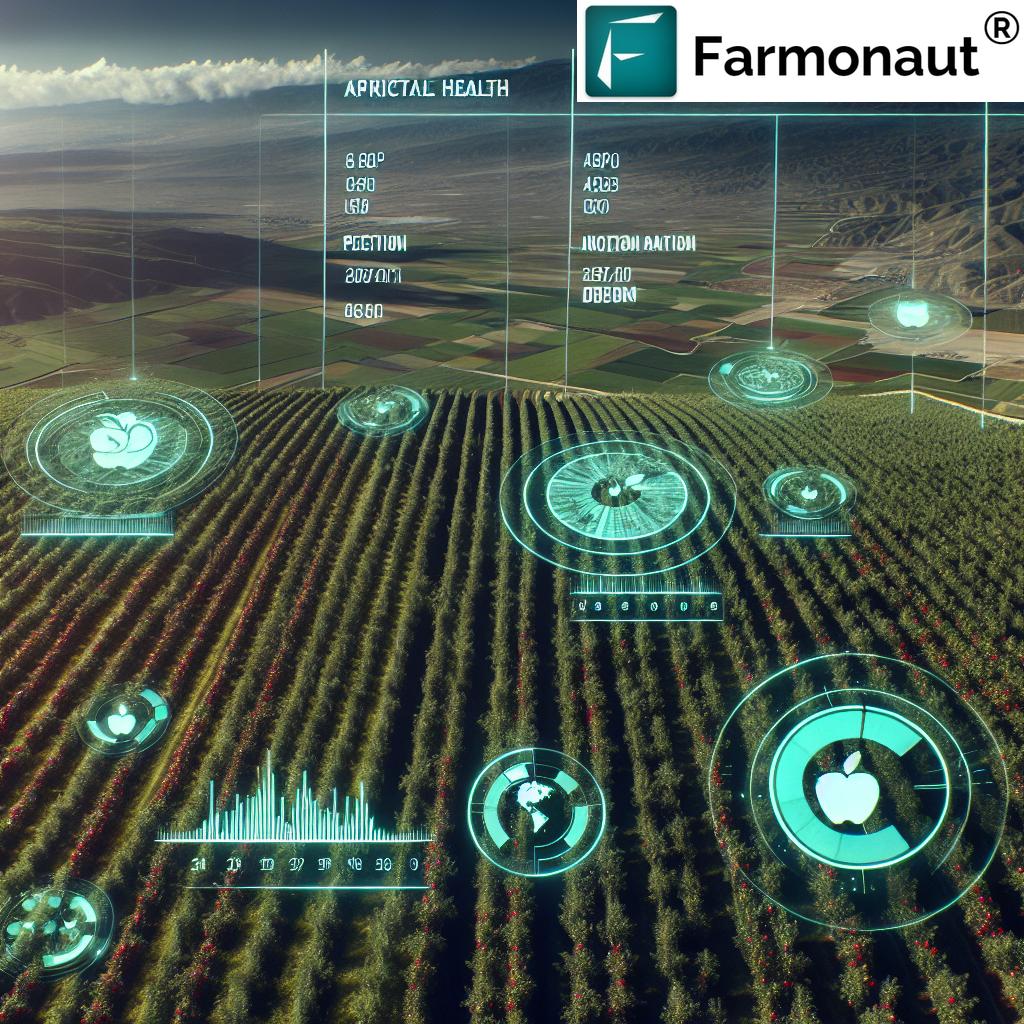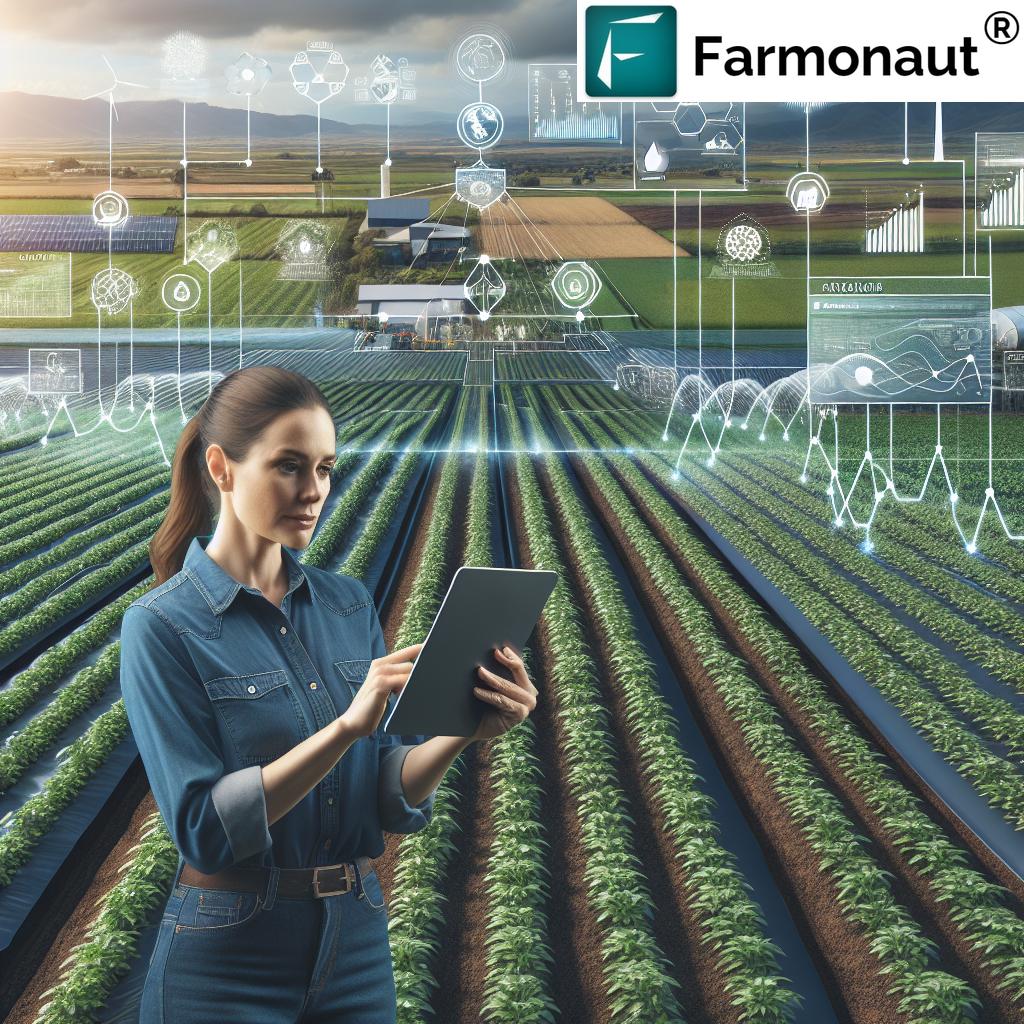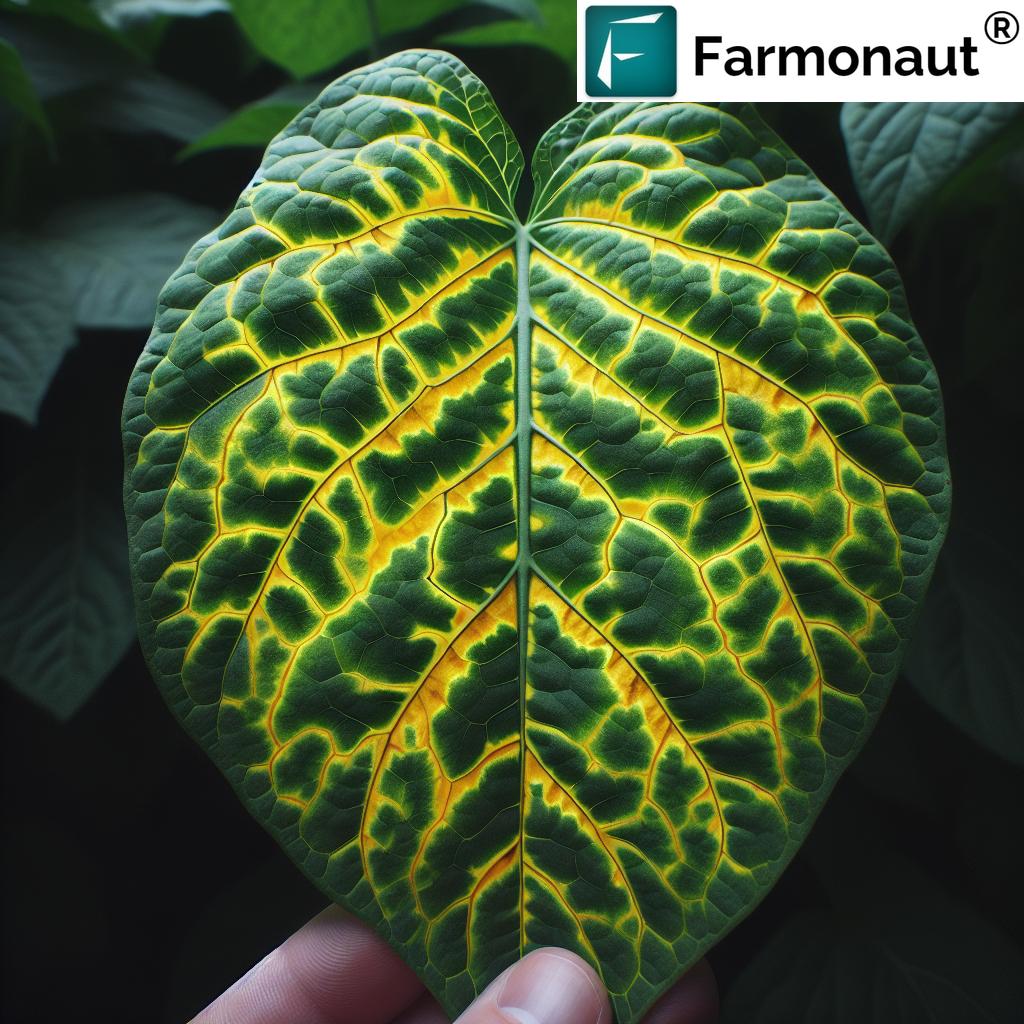Precision Farming Technology: 7 Shocking Innovations Revealed
“AI-powered precision farming can increase crop yields by up to 30% compared to traditional methods.”
Table of Contents
- Introduction: The Revolution of Precision Farming Technology
- The 7 Shocking Innovations in Precision Farming Technology
- Comparison Table of Precision Farming Innovations
- Unmatched Benefits of Precision Farming
- Real-World Applications: Agriculture & Forestry
- Key Challenges Facing Precision Farming Adoption
- The Farmonaut Edge: Making Precision Agriculture Accessible
- Farmonaut Subscription & API Integration
- FAQ: Precision Farming Technology
- Future Prospects & Conclusion
Introduction: The Revolution of Precision Farming Technology
As we stand at the crossroads of technology and agriculture, a silent revolution is underway—driven by precision farming technology. No longer is agriculture solely reliant on centuries-old practices or intuition. Today, precise data, advanced AI, and smart farming systems analyze millions of variables from every corner of our fields, allowing farmers to optimize every action—from soil preparation to harvesting, resource management, and even supply chain traceability.
This seismic shift is not just about higher productivity; it’s about truly sustainable agriculture, data-driven insights, economic growth, and environmental stewardship. In this comprehensive deep-dive, we reveal 7 shocking innovations at the heart of precision farming—technologies redefining the world’s oldest profession for a smarter, greener future.
Our exploration is also closely linked to how cutting-edge platforms like Farmonaut are making these innovations accessible and affordable, helping both smallholder and large-scale farmers, corporate clients, and even government agencies achieve next-level efficiency and sustainability.
Precision Farming Technology: 7 Shocking Innovations Revealed
From machine learning to satellite-based field analysis, discover the critical advancements reshaping agriculture—each transforming fields across the globe:
-
Global Positioning System (GPS) & Auto-Guidance Systems
GPS technology is the backbone of modern precision farming. By leveraging satellites for pinpoint accuracy, farmers can navigate tractors and equipment with sub-inch precision. Auto-guidance systems mean machinery can follow exactly mapped routes—eliminating overlapping passes and missed spots. The result? Efficient field operations, fuel savings, reduced wear and tear on machinery, and optimized planting, fertilizer, and pesticide application.
-
Variable Rate Technology (VRT)
Variable rate technology (VRT) is all about customizing input levels based on real-time data. Using soil sensors, satellite imagery, and yield maps, VRT equipped machinery adjusts seed, fertilizer, and pesticide application to the needs of every zone in a field. This ensures optimal growth conditions for each crop area, reduces input costs, and boosts yield. VRT is a central pillar of true precision agriculture solutions—maximizing both efficiency and sustainability.
-
Remote Sensing & Drone Technology in Agriculture
Remote sensing in agriculture uses drones, satellites, and advanced cameras to provide comprehensive aerial views of crops. These smart eyes in the sky detect pest infestations, nutrient deficiencies, and even subtle changes in soil moisture or vegetation health weeks before problems become visible at ground level. Timely intervention means higher yield and minimized losses—all while safeguarding environmental resources.
-
Machine Learning and AI in Agriculture
Artificial Intelligence (AI) and machine learning are enabling truly data-driven farm management. By analyzing weather trends, historic yield data, and satellite inputs, AI not only predicts disease or pest outbreaks but also recommends best planting times, ideal irrigation schedules, and optimal rotation patterns. Platforms like Farmonaut’s Jeevn AI Advisory System offer personalized, real-time advice to each farmer based on their field data—automating decision-making and boosting overall productivity.
-
Internet of Things (IoT) & Smart Farming Systems
The rise of the Internet of Things (IoT) means sensors—from the soil to the weather station—are interconnected, constantly communicating status updates. IoT sensors for farming track soil moisture, weather changes, equipment performance, and even crop development stages in real time. With this connected ecosystem, smart irrigation, automated machinery maintenance, and smarter resource allocation are possible. The result is dramatic cost reduction, efficient input usage, and better sustainability.
-
Automated Machinery & Robotics
Autonomous tractors, smart planters, and robotics are revolutionizing field operations. Modern machinery with GPS, AI, and sensor-based navigation can perform planting, harvesting, and monitoring tasks independently, reducing the need for human labor. In regions with labor shortages, these devices directly increase operational efficiency and output consistency. Automated solutions also improve safety and precision in applying water, fertilizer, and crop protection agents.
-
Blockchain-Based Product Traceability
This transformative technology links every datapoint from field to shelf. Via secure blockchain records, farmers and companies can track a product’s complete journey, ensuring authenticity, food safety, and quality. Farmonaut’s blockchain-based traceability solution is vital for global supply chains, building consumer trust and minimizing supply chain fraud—powerfully supporting sustainable agricultural practices.
“Smart farming systems analyze over 1 million data points per hectare annually to optimize agricultural decisions.”
Comparison Table of Precision Farming Innovations
| Innovation Name | Main Function | Estimated Productivity Increase (%) | Estimated Cost Savings (%) | Sustainability Benefit | Year of Introduction | Typical Use Case |
|---|---|---|---|---|---|---|
| GPS & Auto-Guidance | Accurate equipment navigation, field mapping | 10 – 15% | 8 – 12% | Reduced fuel/water/material use | 1990s | Large field crop planting & harvesting |
| Variable Rate Technology (VRT) | Zone-based input application | 15 – 22% | 12 – 18% | Reduced chemical runoff | Late 1990s | Fertilizer, seed, pesticide optimization |
| Remote Sensing & Drones | Aerial crop monitoring | 12 – 25% | 10 – 17% | Prevent crop loss, water savings | 2010s | Early detection of stress & pests |
| AI & Machine Learning | Predictive analytics, real-time decision support | 20 – 30% | 14 – 21% | Optimized input, less waste | 2015+ | Weather forecast, pest/disease prediction |
| IoT & Smart Devices | Real-time field & equipment monitoring | 16 – 28% | 15 – 23% | Water and energy savings | 2010s | Connected irrigation, machinery |
| Automated Machinery & Robotics | Unmanned field operations | 13 – 20% | 10 – 18% | Labor efficiency, reduced fuel use | 2020s | Self-driving tractors, harvesting |
| Blockchain Traceability | Supply chain transparency | Varies* | Up to 9% | Reduced fraud, food safety | 2020s | Export crops, organic produce |
*Varies due to indirect benefits; traceability builds trust and reduces losses/fraud in agri supply chains.
Unmatched Benefits of Precision Farming Technology
- Increased Productivity:
By seamlessly integrating data and analytics into every aspect of farm management, farmers achieve higher yields and better crop quality—essential for feeding an ever-growing global population. For example, leveraging Farmonaut’s crop health monitoring, farmers can quickly spot low-vigor areas, maximize resource allocation, and avoid costly mistakes.
- Environmental Sustainability:
Precision farming technology radically changes how we use water, fertilizers, and pesticides. Applications like variable rate technology and IoT-driven irrigation cut resource use, reduce runoff, and help guard against both local and global environmental threats. Tools such as Farmonaut’s carbon footprinting allow agricultural businesses to monitor and reduce emissions, striving for truly sustainable agricultural practices.
- Cost Reduction & Savings:
Farmers deploying precision technologies report significant savings—using fewer inputs (like water and chemicals) and operating equipment more efficiently. The resulting lower operational costs help small and large farms alike stay competitive amid rising input prices and rapidly changing climate conditions.
- Data-Driven Decision-Making:
Precision agriculture solutions generate thousands of datapoints per field, providing real-time information for every input and output. With these insights, farmers can optimize planting dates, manage resources proactively, and choose the ideal times for harvesting or applying fertilizer.
Precision Farming Technology in Real-World Applications
Precision Agriculture for Crop Management
- Precision Irrigation: Automated systems with sensors and actuators deliver exactly the right amount of water, when and where it’s needed most, reducing wastage and increasing water-use efficiency—a critical benefit in drought-prone regions.
For advanced, field-specific irrigation management, Farmonaut’s multi-crop and irrigation advisories provide farmers with satellite-based moisture analytics and irrigation scheduling tools. - Soil Sensors & Nutrient Analytics: IoT sensors for farming continuously monitor soil moisture, temperature, pH, and nutrient content, guiding optimal fertilizer and irrigation strategies. This boosts growth conditions and protects sensitive ecosystems by preventing excess runoff or leaching.
-
Automated Machinery for Field Operations: Global leaders are introducing self-driving tractors and harvesters with built-in AI—capable of running night and day, increasing overall field productivity.
Managing large fleets? Explore efficient fleet and resource management solutions for farm machinery, logistics, and labor deployment.
The Expansion into Forestry: Sustainable Forest Management
- Remote Sensing for Forest Monitoring: Satellite imagery and drones are invaluable for tracking forest health, measuring biomass, and detecting illegal logging. This information is critical for countries prioritizing sustainable forestry and climate goals.
- GIS & GPS for Forest Mapping: Accurate mapping with Geographic Information Systems (GIS) and GPS positioning powers better management and planning, whether for conservation or profitable wood harvesting.
- Variable Rate Application in Reforestation: As in agriculture, VRT enables optimized seeding and fertilization in reforestation areas, ensuring growth success, especially in marginal soils.
- For actionable forestry insights, Farmonaut’s platform supports satellite-based forest health monitoring and reforestation analytics for NGOs, government forestry departments, and large landholders.
Key Challenges Hindering Precision Farming Adoption
Despite its remarkable benefits, the journey toward universal precision agriculture solutions is not without obstacles. Here’s what we face:
- High Initial Costs: State-of-the-art drones, IoT sensors, and GPS-equipped machinery require upfront investment, which can be prohibitive for smallholder farmers.
- Technical Complexity: New systems demand technical expertise in both installation and data interpretation, creating a steep learning curve for many in traditional farming communities.
- Connectivity in Rural Regions: IoT devices and cloud-based software depend on reliable internet access, which is often incomplete or inconsistent in remote farming regions.
- Data Management: The vast volume of sensor, satellite, and machine data generated must be stored, analyzed, and protected—tasks requiring robust software and personnel training.
- Scalability: Different crops, soil types, and climatic conditions demand localized strategy and adaptation, making it resource-intensive for smaller operations to scale precision farming universally.
Our industry’s capacity to overcome these challenges will determine just how global, sustainable, and inclusive the future of agriculture becomes.
Crop Loan & Insurance: Farmonaut’s satellite-based farm verification accelerates loan approval and mitigates risk for lending and crop insurance institutions.
Large-Scale Farm Management: Multi-farm, multi-crop, multi-location management made simple with Farmonaut’s Agro-Admin App.
The Farmonaut Edge: Democratizing Precision Farming Technology
At Farmonaut, our mission revolves around making precision agriculture technology affordable, scalable, and accessible across the entire spectrum of agriculture and forestry. By harnessing a suite of cloud and satellite-based innovations, we empower farmers and businesses—from small single-plot owners to enterprise-scale agribusinesses—to implement true data-driven farm management, improve yields, and reduce environmental impact.
- Satellite Crop Health Monitoring: Multispectral satellite imagery reveals weekly, plot-by-plot status (NDVI, soil moisture, and more), triggering automated advisories on irrigation, fertilizer, or pest intervention. This enables rapid, precise action for optimized growth and minimized losses.
- AI-Driven Jeevn Advisory System: Real-time AI analytics transform raw data from the field and satellites into tailored, actionable farming strategies—sent directly to your mobile or desktop.
- Blockchain-Based Traceability: Transparent, tamper-proof crop tracking from planting to consumer shelf, supporting food safety, export certification, and environmental stewardship.
-
Fleet & Resource Management: Easily track, schedule, and optimize machinery and logistics, resulting in substantial cost savings for farms of any size.
Discover more: Farmonaut Fleet Management -
Carbon Footprinting & Environment Analytics: Monitor, reduce, and document farm emissions with trusted metrics and actionable insights for sustainable agricultural practices.
More details here: Farmonaut Carbon Footprinting - API Integration: Modern agriculture meets seamless tech—real-time satellite data API and developer docs for businesses and agri-startups.
With user-friendly web, Android, and iOS apps, Farmonaut removes barriers—helping farmers worldwide leap from guesswork to truly data-driven decisions.
Farmonaut Subscription Plans & Integration
Farmonaut’s affordable subscription model is tailored for individual farmers, agri-businesses, government programs, and developers/partners. Get started with just your farm boundary! For scalability and integration:
- Apps: Monitor multiple fields, crops, or plantations via web or mobile apps.
- API/Developer Access: Aggregate satellite imagery and weather data seamlessly into your own dashboard using Farmonaut’s robust API (API Docs).
FAQ: Precision Farming Technology
What is precision farming technology?
Precision farming technology refers to a set of practices and systems that utilize advanced tools like GPS, remote sensing, IoT sensors, and AI to optimize resource use, maximize productivity, and promote sustainability in agriculture. It enables farmers to manage fields at a micro (sub-field) level with real-time data-driven insights.
How does precision agriculture reduce environmental impact?
By analyzing detailed field data, precision farming solutions help apply only the needed amount of water, fertilizers, and pesticides. This reduces chemical runoff, conserves natural resources, and limits air, soil, and water pollution.
Is precision farming only for large farms?
Not anymore! Thanks to innovations like Farmonaut’s satellite-based platforms and API tools, smallholders and cooperatives can implement affordable, scalable precision agriculture solutions—often without expensive on-ground hardware.
What crops and regions are best suited for precision farming?
Precision farming is applicable to nearly any crop or region, from wheat, corn, and soybeans to horticultural plants and even forestry. The flexibility of IoT, AI, and cloud-based platforms enables customization for specific field types, climates, and business models.
How can I start with Farmonaut?
Simply register via Farmonaut’s web or mobile app, upload your field boundaries or area coordinates, and receive satellite-based analytics, crop health advisories, and actionable insights for optimized farm management.
The Future of Precision Farming Technology: Where Are We Headed?
The next wave of precision farming technology promises to deepen AI capabilities, lower hardware entry barriers with low-cost sensors, enhance blockchain traceability, and expand smart device use into even remote regions. Farmonaut will continue empowering farmers, governments, and agribusinesses by providing ever-more accessible, integrated solutions.
As food security demands rise and sustainability becomes non-negotiable, integrating data-driven insights into every level of agriculture and forestry is not just advantageous—it’s essential.
Let us together move towards a sustainable, optimized, and productive farming future—one field, one insight, one innovation at a time.





